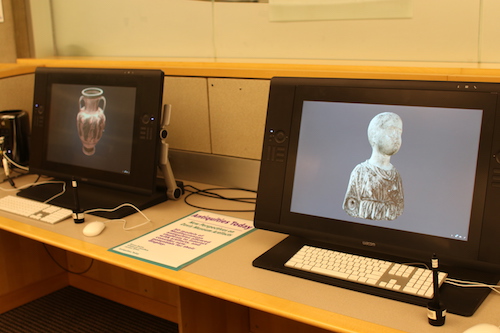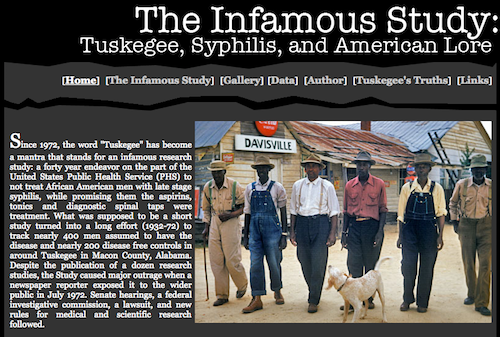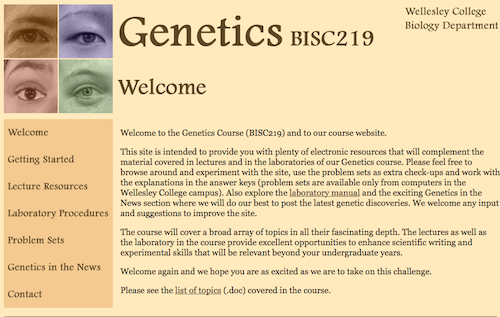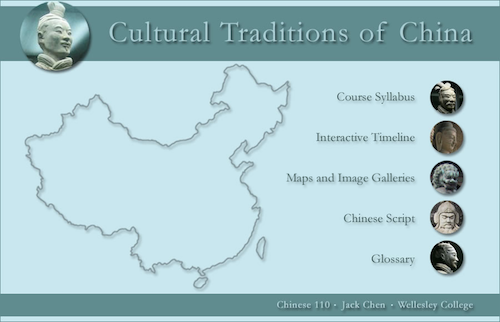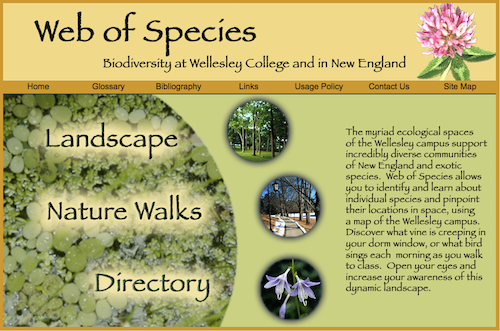Knapp Media and Technology Projects
Selected Knapp Intern Projects
See below for descriptions of some of the most notable Knapp intern projects. Some of these descriptions link to sites that are still up and running more than ten years after their creation.
2017-present - Anna Karenina VR Train Car
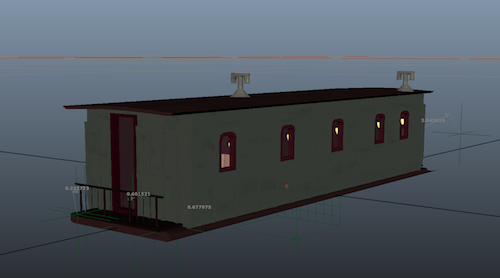
Participants: Tom Hodge, Jordan Tynes, and Aubrey Simonson. This project focuses on creating an interactive CGI (computer-generated imagery) model of the train car in which Anna Karenina rides from Moscow to St. Petersburg in Tolstoy’s novel of the same name. This project will allow teachers and students of the novel to see details of Anna’s surroundings at a crucial juncture of the text to experience her physical environment as vividly as possible. Students will use the CGI model to explore the people and furnishings around Anna: her maid, the invalid lady, the stoker, the heating stove, and Anna’s English novel, paper knife, handbag, and candle-lamp. Precise, immersive visualization of the train in Anna Karenina will shed welcome new light on one of the key symbolic problems in nineteenth-century European literature.
2016-present - VR Evolutionary Osteology Lab
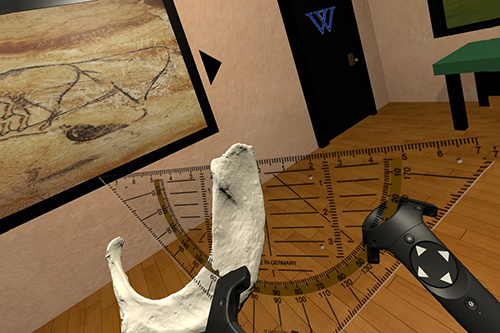
Participants: Adam Van Arsdale, Jordan Tynes, and Kamile Lukosuite. This project aims to create a fully-immersive 3D virtual reality (VR) laboratory environment for students in Biological Anthropology, Human Evolution, and Forensic Anthropology courses at Wellesley College. Utilizing high-resolution 3D scans of existing human skeletal and fossil replica collections, the 3D VR lab will allow students to study, manipulate, and learn from these valuable resources in new ways and with improved accessibility.
2015-present - Digital Eleon
Participants: Bryan Burns, Jordan Tynes, Shane Cox, and Michelle Lu. Developed new methods for archaeological fieldwork in central Greece conducted by a Wellesley Classics Professor and colleagues using high-end aerial photography drones and cutting edge 3D data acquisition. Created detailed 3D models at various scales, from individual artifacts to architectural units to the whole site’s topography. Documented excavated objects with traditional studio photography, tangible replicas, and digital avatars experienced in a Virtual Reality setting. Full project website: Digital Eleon
2008 - The Infamous Study Website
Participants: Susan Reverby, Rachel Kaston '10, and Donna Yee '11. Created a website for Professor Reverby's book, The Infamous Study: Tuskegee, Trust, and American Lore about the Tuskegee Syphilis Study. The controversial study followed a group of syphilitic African American men, and has fueled current debates on racism. Professor Reverby's aim in her publications is to unveil the truth about this study through data and artifacts. The website featured book information as well as images and data from the study not included in the book. It also contains information about Professor Reverby and her previous book, Tuskegee's Truths.
2008 - Neuroscience Website
Participants: Bevil Conway, Kate Ciurej '08, and Donna Yee '11. Created a website for the Neuroscience course Vision & Art. The website contained descriptions of the many discipline areas the course covers (Art History, Computer Science, Neurobiology, Physics, Psychology, and Studio Art). It featured a showcase of student final projects; course information including a syllabus; and guest lecture information with a contact form so that interested individuals may contact Professor Conway.
Psychology Videos and Animations
Participants: Jennie Pyers, Ariel Hathaway '09, and Ran Tao '09. Created a series of videos and animations for Pyers' studies on false-belief understanding. Ran created a digital animation and Ariel shot and edited a video, both of which will be used to measure one’s ability to understand that people can have beliefs that are false. The new animations and videos developed by Ran and Ariel were unique in that they were non-verbal measures that can be used to test false-belief understanding in low-verbal populations.
2005 - Biology Website
Participants: Andrea Sequeira, Courtney Chin '07 & Christina L. Miller '08. Developed a website for the Genetics BISC219 biology course co-taught with Professor Drew Webb. This course has no textbook, so the site provides many links to complement materials covered in lectures and labs. A "Getting Started" section reviews topics covered in Intro to Cell Biology. There are also over fifty links to sites on topics such as Mendelian genetics, allele and gene interactions, mutations, and evolutionary genetics. There are six online problem sets with answers and explanations.
2004 - Introduction to the Cultural Traditions of China Website
Participants: Jack Chen, Mimi Lai '06, and Kristen Roth '06. Created a web site for a new course on Introduction to the Cultural Traditions of China (CHIN 110). The site features an interactive timeline covering almost eight thousand years of history. Students in the course will add events and descriptions of these events to the timeline each semester. The interns also created sections describing the evolution of Chinese characters, images of Chinese art and objects, and over twenty maps.
2004 - Biodiversity Website
Participants: Nick Rodenhouse, Niki Zhou '05 and Carla Holleran '06. Created a web site illustrating over three hundred plants, animals, and fungi in five habitats of the Wellesley College campus.
2003 - Political Science Website
Participants: William Joseph, Guiliana Funkhouser, and Joyce Hsu ‘05. Created a searchable, Internet-accessible database of images of daily life in China during the Cultural Revolution, taken by Professor Joseph in 1972. In the first phase of the project, over 250 slides were digitized by the interns and then annotated by Professor Joseph. The database is organized by geographic region within China as well as by topics such as agriculture, arts, education, health care, industry, and politics.
2003 - Principles of Neural Development Website
Participants: Carol Ann Paul, Christina Greavu ’05, and Giuliana Funkhouser ‘04. Developed a web page explaining immunocytochemical techniques for Biology 306 (Principles of Neural Development). The interns developed a series of digital animations explaining some of the preliminary steps for processing tissue with antibodies. Topics included how to preserve tissue by crosslinking proteins; how to “make holes” in the cell membrane to enable antibodies to penetrate cells; and the structure and workings of antibodies.
2002 - Das Versprechen German Website
Participants: Thomas Nolden and Keigh Hammond ‘03. Building on the success of previous project for 5th semester German, Keigh created a new website for 3rd semester German centered around Das Versprechen ("The Promise"), a 1994 film by Margarethe von Trotta about friends separated by the Berlin wall for 28 years. The site included grammar and comprehension exercises, as well as brief clips from the film.

